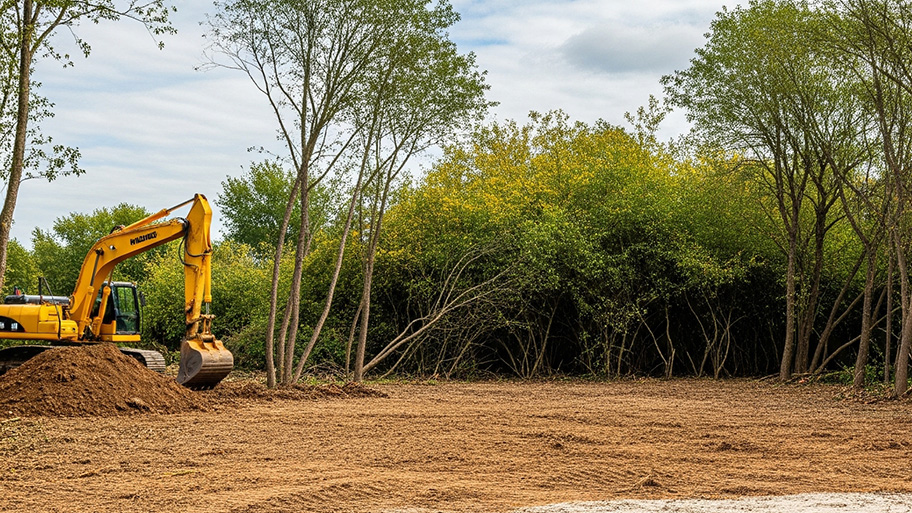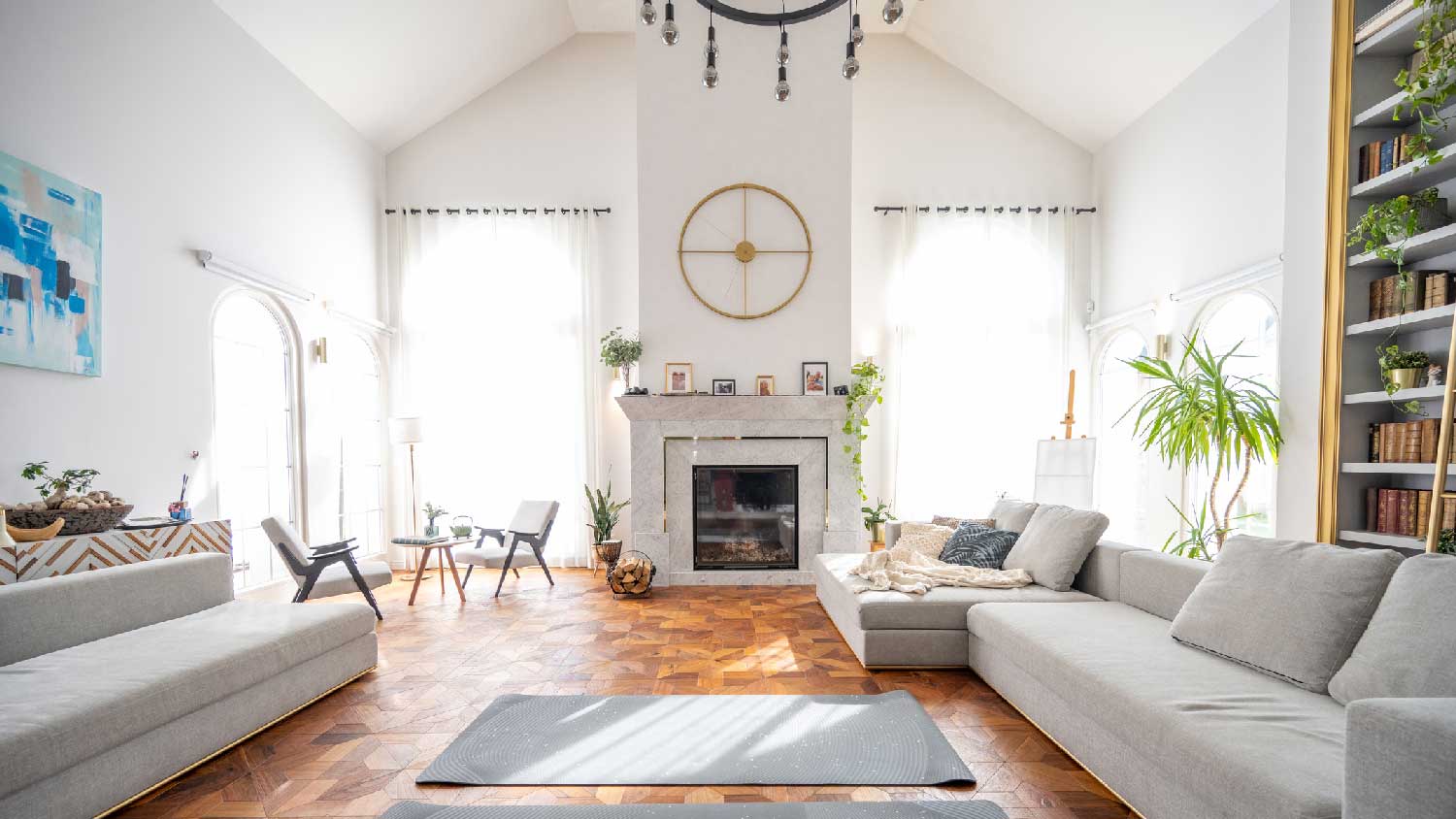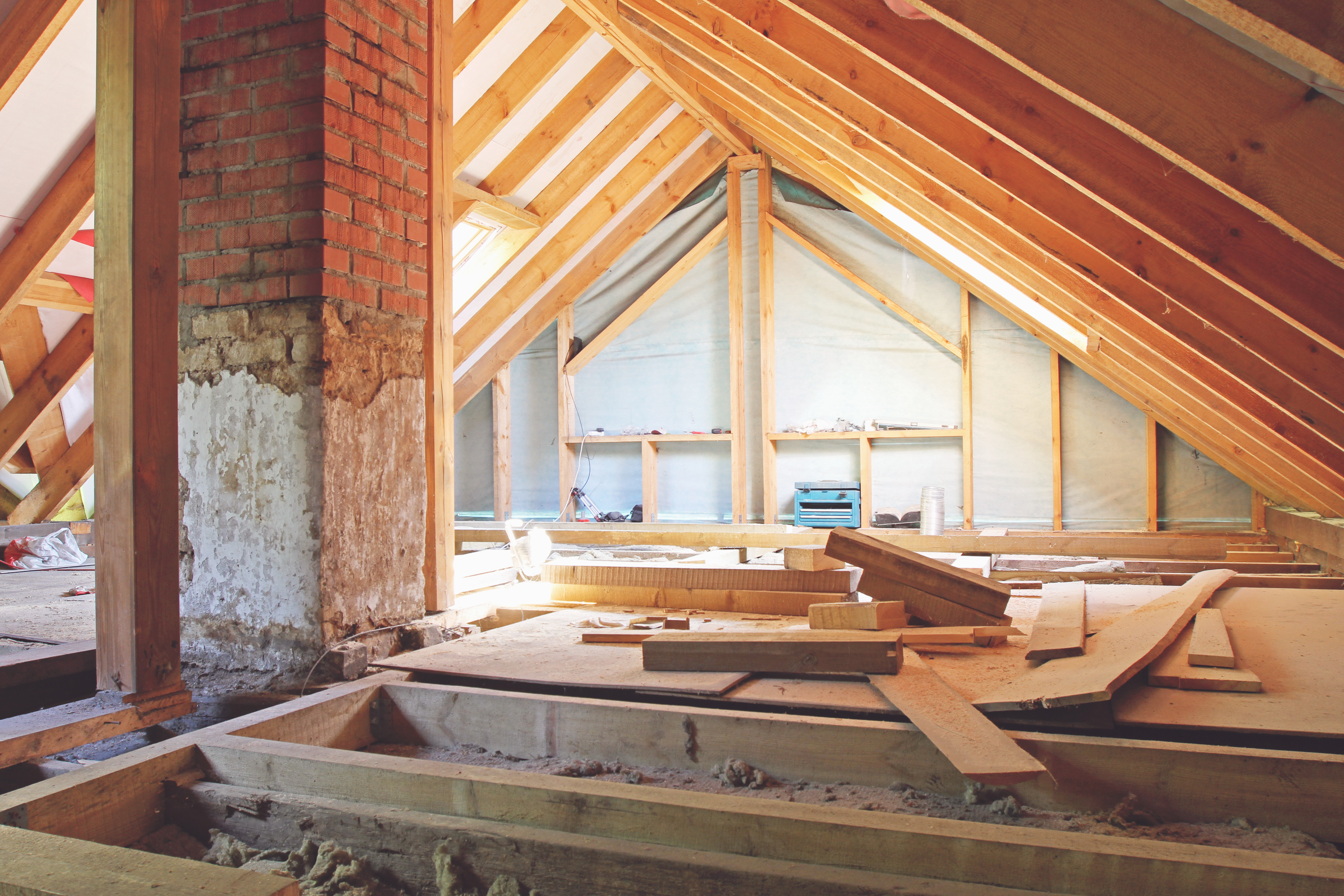
Going from an undeveloped plot to your dream home can be expensive. Learn about the cost to develop land and what factors can affect your total.
With nods to the grand cathedrals of yesteryear, a cathedral ceiling is sure to impress


A cathedral ceiling is a type of vaulted ceiling that makes a room look bigger and brighter.
These ceilings are less energy efficient and require more costly repairs than other options.
Cathedral ceilings work best in new builds and rooms near the center of the home.
Most homeowners spend $5,000 to $38,000 on cathedral ceilings.
The standard ceiling height is about 8 feet, but cathedral ceilings prove the sky’s the limit. At the very least, you’re only limited by the height of your roof—but the sky-high look of this vaulted ceiling can be quite polarizing. For every homeowner enamored with the luxury this ceiling adds to a living room, there’s another eyeing more practical options. Let’s dive into what a cathedral ceiling is and the pros and cons of installing one.
A cathedral ceiling is a vaulted ceiling with flat planes that slope diagonally from parallel walls toward a high point in the center of the room. These planes are symmetrical in their slope and follow the pitch of the roof.
The standard ceiling height is around 8 feet. Cathedral ceilings start at around 8 feet at the wall and slope toward the center of the room, peaking at a height of 12 to 20 feet, but sometimes they go even higher. A ceiling pro can assess whether a cathedral ceiling works with your existing space.
The cost to vault a ceiling is anywhere from $5,000 to $38,000. Converting a standard ceiling to a cathedral ceiling falls toward the higher end of the price range because you’ll have to work around trusses, move pipes, and mind existing electrical wires (you’re dealing with whatever is hiding behind your ceiling). It’s less expensive to install a catherdral ceiling in new construction.
Cathedral ceilings work best in rooms toward the center of the home, where the roof naturally peaks. In complex areas, you could spend more than $47,500 on this project.

There’s a good reason so many homeowners opt for cathedral ceilings during a remodel. If you have the budget, vaulted ceilings can transform a space and make it feel unique. Here are some of the advantages of these ceilings.
Cathedral ceilings originated in cathedrals, so unsurprisingly, they live up to their name. This type of ceiling has a notable look of grandeur with its eye-catching height and unique slope. It adds an air of opulence to a room along with serious character—especially if you add elements like exposed beams, skylights, or chandeliers. Cathedral ceilings are particularly impactful against the contrast of the standard-height ceilings in your home.
Taller ceilings can visually open up a room. While you won’t get more floor space, you get more visual space. This can make a room look bigger, even though the square footage has the same imprint.
Cathedral ceilings give homeowners extra wall space, a prime location for additional windows and light fixtures to brighten a dark room. Skylights, window arches, and floor-to-ceiling windows are popular options.
Though you may love the look of cathedral ceilings, there are a few drawbacks.
The largest drawback to cathedral ceilings is the cost, especially if you want to remodel an existing room. The average cost is $20,000, but as mentioned above, it can go as high as $47,500. Depending on the room's location, it may not be a practical option.
Cathedral ceilings are not as energy efficient as standard-height ceilings and tend to be draftier. You’ll need to use more energy to effectively heat the space because heat rises up into the added height of the ceiling. Skylights and extra windows can also increase your energy losses.
That said, extra insulation and ceiling fans can help improve energy efficiency, but these ceilings are still a drain compared to other options.
Maintaining a cathedral ceiling isn’t as simple as standing on a chair to change a light bulb. Because these ceilings are so high, touching up the paint or cleaning a skylight can be especially difficult. If your ceilings exceed the height of a normal ladder, you might need to bring in a ceiling company.
Getting up on a ladder to work on your ceiling is dangerous. Unless you have experience and a buddy nearby to help you, call a pro to complete the job.
While you might here the terms cathedral ceilings and vaulted ceilings used interchangeably, they’re not exactly the same. Rather, cathedral ceilings are a type of vaulted ceiling—and one of the most popular at that.
There are many different kinds of vaulted ceilings. Shed ceilings, for example, have one ceiling panel that slopes from the wall to a high point. They look almost as if a cathedral ceiling was were cut in half. Barrel ceilings are high ceilings that are arched instead of pointed.

A cathedral ceiling can make an impact, but it’s not a good fit for every home. Some homeowners love the drama and flair, and it can be a great addition to new construction. However, if you’re planning a renovation, you’ll need to carefully consider ceiling options. A cathedral ceiling may not suit every room because of the underlying structure of your home.
There are many different ceiling options, some of which don’t require major renovations. A local ceiling company can help you determine which option works best with your space.
From average costs to expert advice, get all the answers you need to get your job done.

Going from an undeveloped plot to your dream home can be expensive. Learn about the cost to develop land and what factors can affect your total.

Use our guide to calculate the cost to install a stair lift in your home. Prices depend on the type of stair lift, including the seat style and other advanced features.

Discover storm damage repair costs, key price factors, and ways to save. Get transparent estimates to plan your home repairs with confidence.

How much lumber you need for framing depends on several measurements. Use this calculator to estimate how to calculate lumber for framing.

How much of a tip is enough when tipping contractors? We cover which contractors you should tip, how much that tip should be, and when you should avoid tipping.

The main parts of floor framing include the sill, rim joists, and other joists. Learn how this wood may require repairs against water or insect damage.